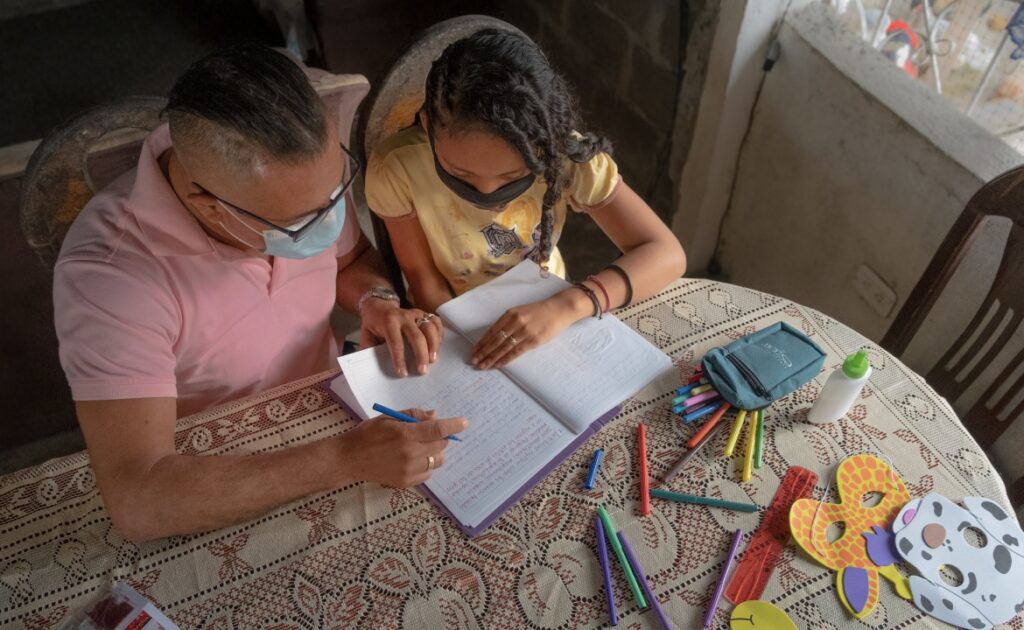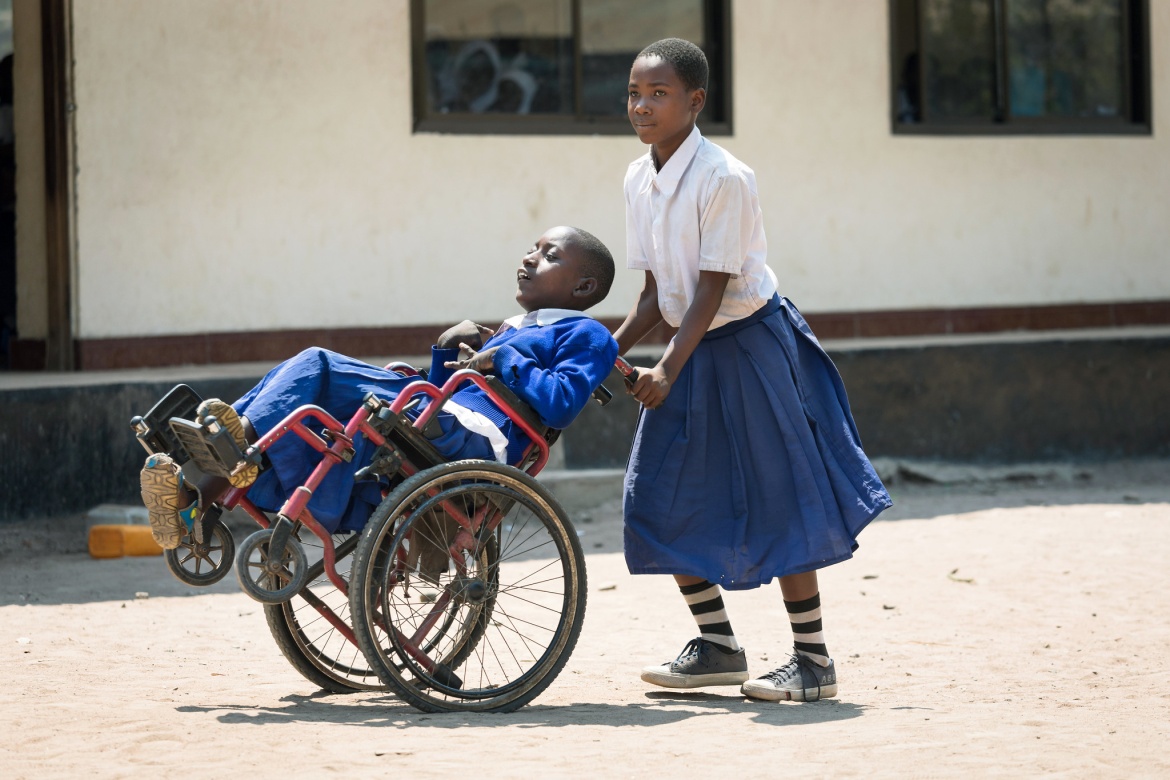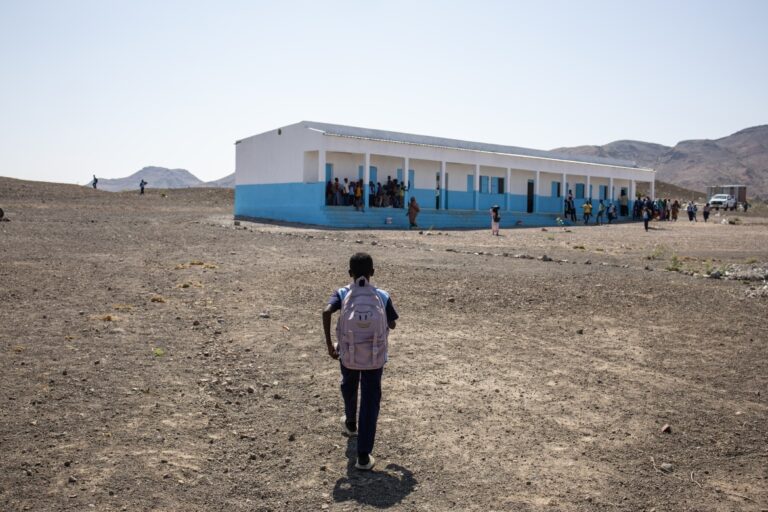INEE presents 7 principles to help educators and make education more inclusive for children with disabilities in emergencies contexts.
This blog was also published on the INEE website.
Globally, 224 million young people are affected by crises. Based on recent estimates indicating 1 in 10 young people has a disability, there may be at least 22.4 million young persons with disabilities living in emergency and crisis-affected contexts.
This number is likely even higher given the health and safety risks affecting child development during crises.
Through a consultative process, the Inclusive Education Working Group (IEWG) at the Inter-agency Network for Education in Emergencies (INEE) has developed two reports on disability-inclusive education in emergencies (EiE). The first includes a resource repository and mapping. The second report presents a taxonomy of key concepts, examples of disability-inclusive education interventions from diverse regions and emergency contexts as well as these 7 principles for effective disability-inclusive EiE:
1. Encourage ownership of inclusive education efforts by meaningfully engaging communities in education, organizations of persons with disabilities (OPDs) in particular.
Principle 1 aligns with the UN CRPD and the definition of localization adopted by INEE. Localization is particularly important in emergency contexts where the presence of local actors, who understand cultural and contextual intricacies and the evolving needs of communities and individuals, is invaluable.
When community members, including learners with disabilities and their caregivers, are meaningfully involved in critical conversations and decision-making, educational initiatives are more relevant and effective, embedded into local practices and sustained over time.
2. Strengthen disability data collection tools and processes to enable more informed decision-making across all phases of an emergency.
Comprehensive and up-to-date data help identify where vulnerable children and youth are during times of crisis as well as their education, health and protection needs. Using the Washington Group Questions and disaggregated data are key to capturing how disability intersects with other characteristics such as gender and refugee status.
Improving data quality also requires better coordination among humanitarian actors to work together on collecting, analyzing and sharing disability-related information throughout an emergency as it relates to preparedness, response and recovery.

3. Support early interventions for learners with disabilities and ensure that they have access to basic services, including assistive devices and technologies and specialized services.
Here “early intervention” has a double meaning, referring to both the early identification of persons with disabilities and the provision of rapid and effective services in response to their individual needs.
In emergencies, persons with disabilities may lose access to important services such as assistive devices, technologies or community rehabilitation. Injuries or harm may also increase the number of persons with disabilities. Identifying these learners and their needs, the available services and service providers early on is critical in EiE settings.
4. Remove barriers to education access and participation for learners with disabilities and create safe and inclusive teaching and learning environments.
Our report describes the different attitudinal, environmental and institutional barriers learners with disabilities face in emergencies.
Removing these barriers is a fundamental aspect of the UN CRPD and essential for developing disability-inclusive education programming. Strategies include community campaigns and sensitization efforts, infrastructure following universal design principles and fostering safe learning environments.
Upholding the principle of 'do no harm' for all learners including those with disabilities must be at the center of all efforts.
5. Provide reasonable accommodations in the curriculum, instruction and assessment and create accessible and inclusive teaching and learning materials.
Curriculum and assessment systems should be flexible, and teaching and learning materials can support inclusion through positive representations of learners with disabilities and other marginalized groups.
This principle emphasizes the use of reasonable accommodations such as assistive devices and technologies, additional time for tasks, alternate assessment methods or a sign-language-rich environment for learners with hearing disabilities.
Incorporating universal design for learning and facilitating inclusive classroom and extracurricular activities are essential to ensuring the holistic development of learners with disabilities in crisis contexts.

6. Support the well-being and motivation of teachers, including those with disabilities, and help them meet their learners’ diverse needs.
Teachers can be critical agents of change, but they must be supported, especially in emergencies where they face challenges to their mental and physical health.
Principle 6 aligns with INEE’s Guidance Note on Teacher Well-being and suggests that inclusive EiE programming should support teachers through a multifaceted approach that addresses compensation, work environments, mental health and psychosocial support (MHPSS) and relevant, high-quality professional development, coaching and mentorship.
Diversity among teachers is also encouraged not only to promote inclusive practices, but also to have role models for learners and communities alike.
7. Use a rights-based approach to disability-inclusive EiE and mainstream disability inclusion into organizational and institutional culture.
A rights-based approach prioritizes non-discrimination and universal access. Laws and policies within governments or other institutions should be comprehensive, considering the diverse nature of disabilities and their intersections with other vulnerabilities.
Effective implementation hinges on accountability, clear objectives, well-defined roles and coordinated efforts across government levels and sectors.






